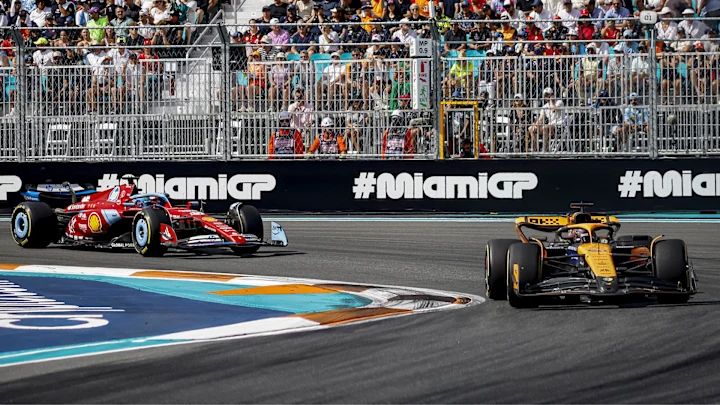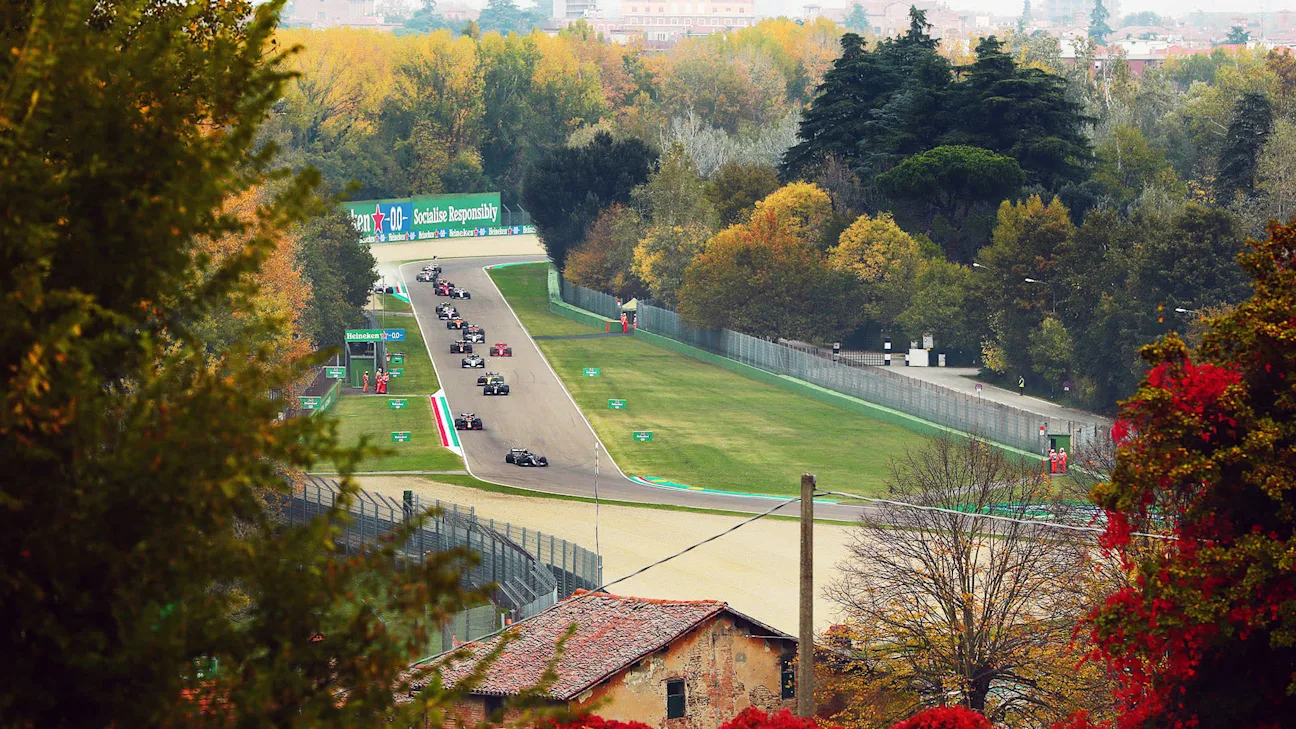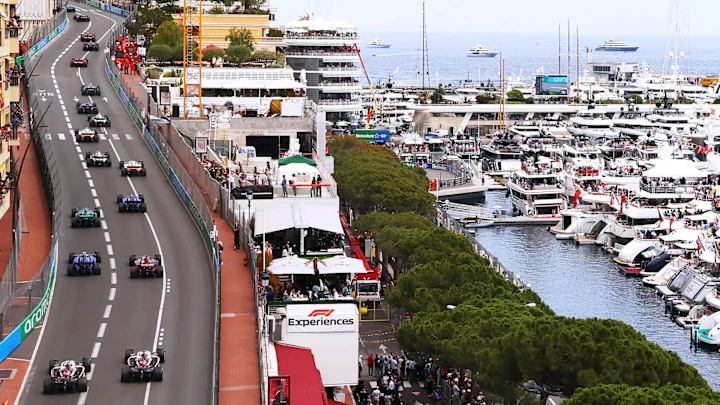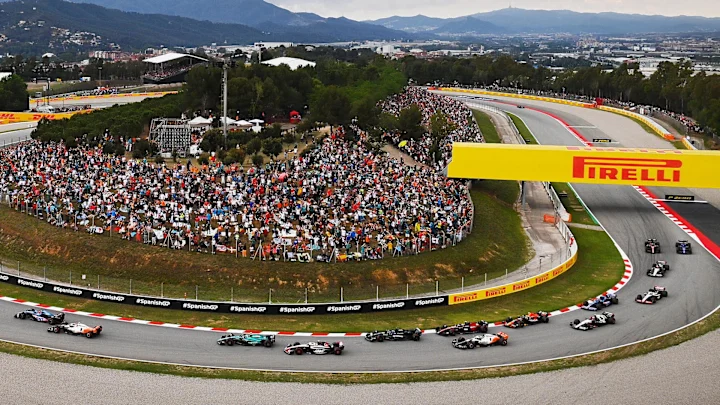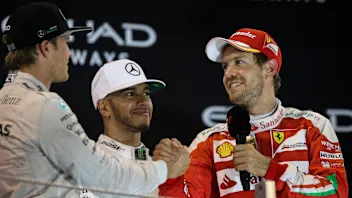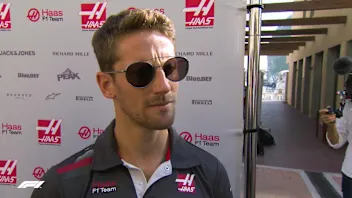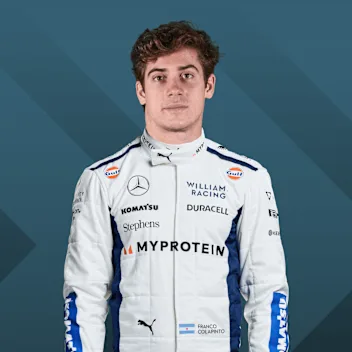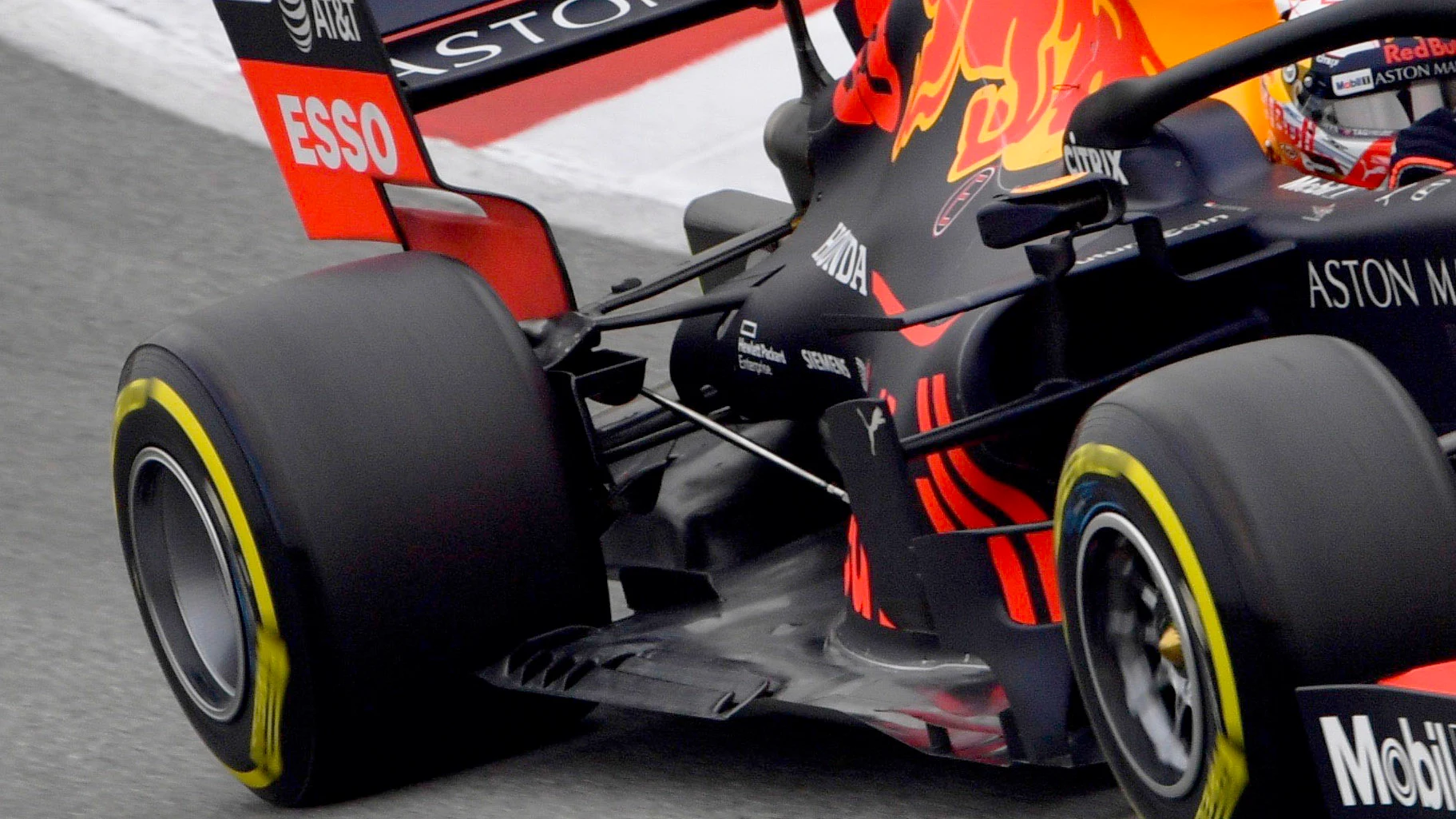
Ferrari have created an airflow exit for the radiators directly behind the radiator (the red arrow in the illustration above). This is only a small part of the total exit area, with most of it still exiting at the rear, around the exhaust, but devoting this small area in the side to venting the hot air brings two potential advantages:
- The outlet area at the back can be correspondingly smaller, allowing the bodywork to be more tightly-waisted there, which helps accelerate the airflow, increasing downforce.
- The flow can be aligned with that coming from the vortex generated by the hump in the bodywork ahead (the blue arrow), increasing the speed of the air flowing out of the radiator outlet and therefore its cooling capacity.
2. Renault’s rear-wing endplate winglets
2. Renault’s rear-wing endplate winglets
2. Renault’s rear-wing endplate winglets
- The flow can be aligned with that coming from the vortex generated by the hump in the bodywork ahead (the blue arrow), increasing the speed of the air flowing out of the radiator outlet and therefore its cooling capacity.
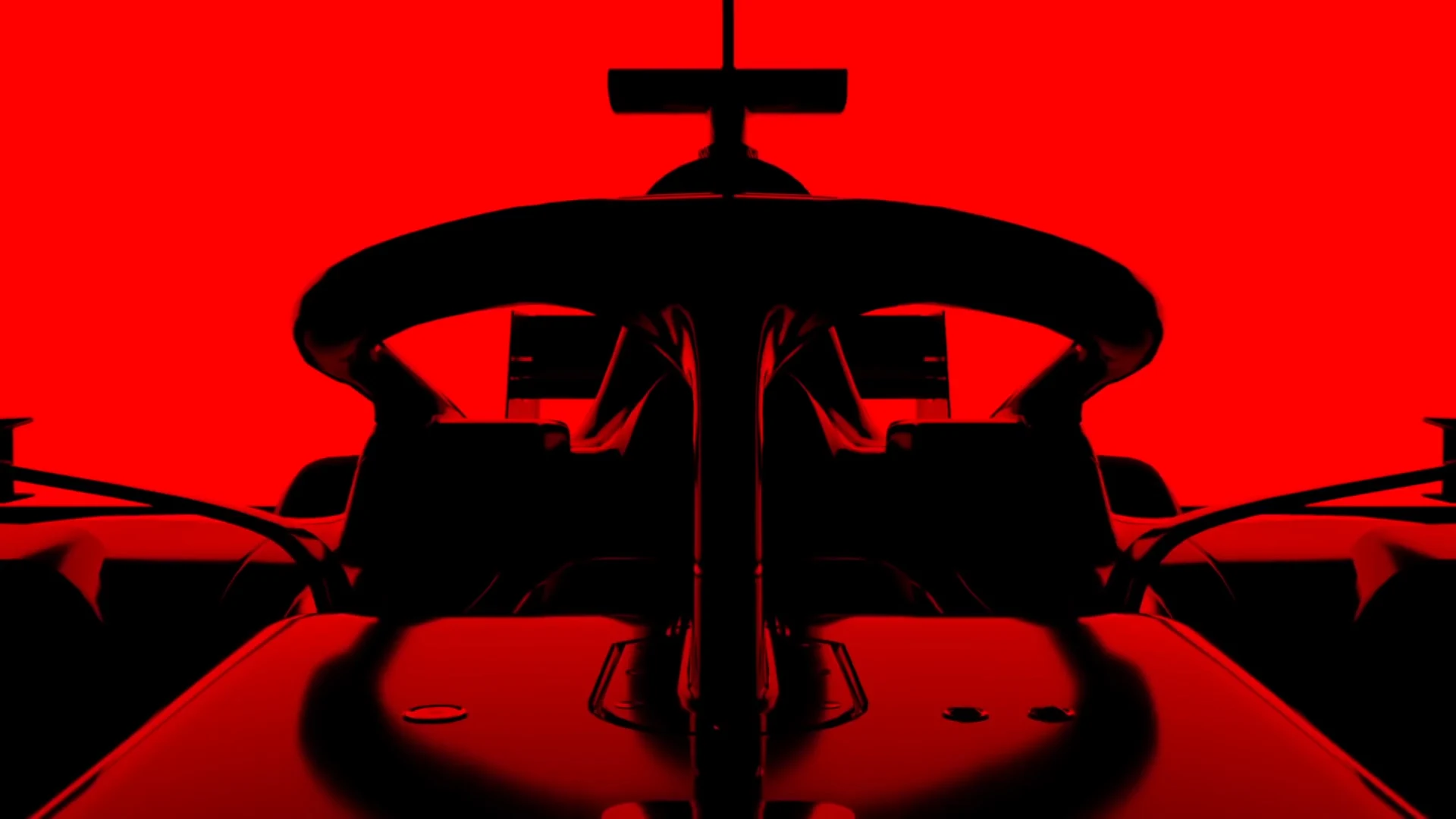
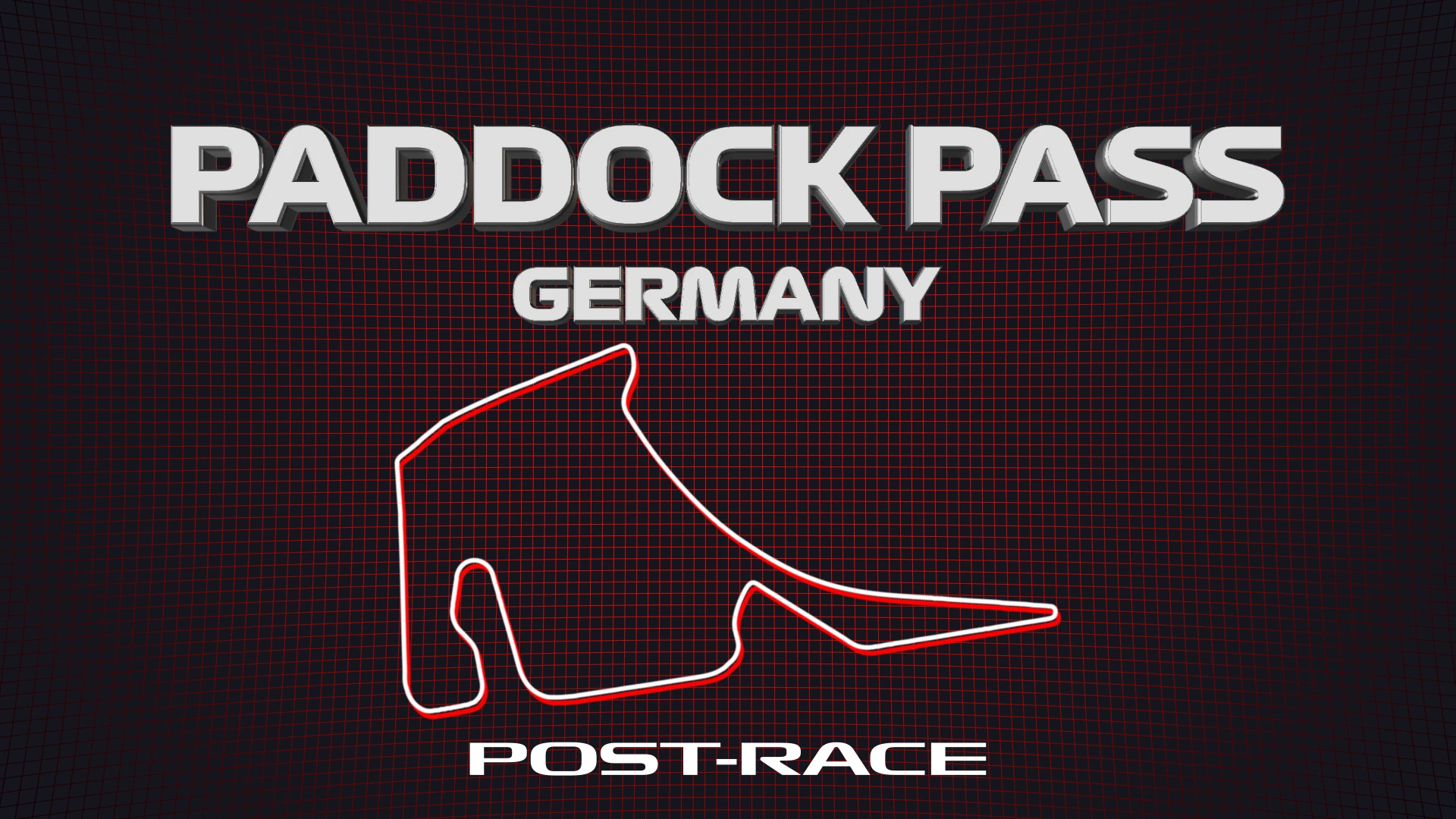
Standard - Leclerc has shown pace, but he’s also had off weekends. Is it really best to bring in an unproven quantity when Ferrari has such great momentum?
=== Not implemented yet: atomSessionResults (7) ===




